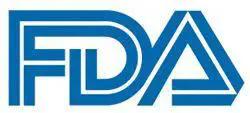News
Article
FDA Expands Entrectinib Indication in Pediatric Patients With NTRK+ Solid Tumors
Author(s):
The FDA has granted accelerated approval to entrectinib (Rozlytrek) for pediatric patients aged older than 1 month with solid tumors that harbor a NTRK gene fusion without a known acquired resistance mutation, are metastatic, or where surgical resection is likely to result in severe morbidity, and have progressed after treatment or have no satisfactory standard therapy options.
FDA

The FDA has granted accelerated approval to entrectinib (Rozlytrek) for pediatric patients aged older than 1 month with solid tumors that harbor an NTRK gene fusion without a known acquired resistance mutation, are metastatic, or where surgical resection is likely to result in severe morbidity, and have progressed after treatment or have no satisfactory standard therapy options.
The regulatory agency also approved a new oral pellet formulation.
The decision was supported by findings from 33 pediatric patients enrolled in one of two multicenter, single-arm clinical trials: the phase 1/2 STARTRK-NG trial (NCT02650401) or the phase 2 TAPISTRY trial (NCT04589845). Patients had received entrectinib based on body surface area, with once-daily doses ranging from 20 mg to 600 mg administered orally or through an enteral feeding tube in 4-week cycles.
Entrectinib elicited an overall response rate (ORR) of 70% (95% CI, 51%-84%) in these patients, which was comprised of a complete response rate of 42% and a partial response rate of 27%. The median duration of response (DOR) with the agent was 25.4 months (95% CI, 14.3-not evaluable), with 43% of patients experiencing a response that lasted for at least 12 months.
About STARTRK-NG and TAPISTRY
The open-label, multicenter trials enrolled pediatric patients with unresectable or metastatic solid tumors harboring an NTRK gene fusion who had measurable or evaluable disease at baseline and no previous exposure to a TRK inhibitor. To be included in the analysis, they needed to have received at least 1 dose of entrectinib and have at least 6 months of follow-up.
The major efficacy outcome measure of the trial was ORR by blinded independent review (BICR) and in accordance with RECIST v1.1 criteria for extracranial tumors and by RANO criteria for primary central nervous system tumors. Another efficacy end point of interest was DOR, which was also evaluated by BICR.
In the 33 pediatric patients assessed for efficacy, the median age was 4 years (range, 2 months to 15 years). Approximately half (52%) were male and White (58%). Most patients (71%) had locally advanced disease, and the remainder had metastatic disease. Moreover, 85% of patients previously received treatment for their cancer, including surgery (n = 20), radiotherapy (n = 7), and/or systemic treatment (n = 22). Metastatic disease sites included other (n = 4), brain (n = 3), and lung (n = 2).
Additional Efficacy Data
When broken down by tumor type, entrectinib induced an ORR of 53% (95% CI, 28%-77%) in those with primary CNS disease (n = 17), with a DOR ranging from 5.5 months to 30.4+ months. In those with infantile fibrosarcoma (n = 8), the ORR with the agent was 88% (95% CI, 47%-100%), with a DOR ranging from 3.7+ months to 24+ months. The ORR was 100% (95% CI, 54%-100%) in patients with spindle cell disease (n = 6), with a DOR ranging from 3.7+ months to 12.9+ months. One patient with melanoma also responded to treatment, with a DOR of longer than 42.4 months. The patient with sarcoma did not respond to entrectinib.
When examining efficacy based on NTRK partner, the ORRs were 86% (95% CI, 42%-100%), 80% (95% CI, 28%-99%), 100% (95% CI, 29%-100%), 67% (95% CI, 9%-99%), and 50% (95% CI, 1.3%-99%) in those with ETV6 - NTRK3, LMNA - NTRK1, TPM3 - NTRK1, TPR - NTRK1, and EML4 - NTRK3, respectively.
Safety Data
The safety of the agent was examined in 76 pediatric patients, 68 of whom were enrolled in STARTRK-NG, 6 enrolled in TAPISTRY, and 2 enrolled in the phase 2 STARTRK-2 trial (NCT02568267). Fifty-eight percent of the patients had been exposed to entrectinib for at least 6 months, and 38% had been exposed for at least 1 year.
Forty-five percent of patients experienced serious adverse effects (AEs) with the agent, and this included skeletal fractures (12%), pneumonia (5%), pyrexia (5%), hydrocephalus (5%), device-related infection (4%), hypoxia (4%), dyspnea (3%), headache (3%), gait disturbance (3%), pain (3%), upper respiratory infection (3%), and sepsis (3%).AEs resulted in dose interruptions and reductions for 39% and 21% of patients, respectively.
The most common AEs that occurred in at least 20% of pediatric patients enrolled in 1 of the 3 trials were pyrexia (any grade, 43%; grade 3/4, 1.3%), fatigue (30%; 2.6%), constipation (41%; 1.3%), vomiting (38%; 0%), diarrhea (37%; 0%), nausea (34%; 0%), abdominal pain (20%; 2.6%), increased weight (39%; 18%), cough (33%; 1.3%), nasal congestion (20%; 0%), pain in the extremities (26%; 2.6%), skeletal fracture (25%; 11%), reduced appetite (24%; 1.3%), headache (22%; 2.6%), upper respiratory tract infection (20%; 1.3%), and urinary tract infection (20%; 2.6%).
Laboratory abnormalities that worsened from baseline and occurred in at least 20% of patients who received the agent on 1 of the trials were decreased hemoglobin (any grade, 53%; grade 3/4, 7%), neutrophils (53%; 22%), leukocytes (46%; 1.3%), and lymphocytes (33%; 3%); increased creatinine (84%; 5%), aspartate aminotransferase (61%; 2.7%), alanine aminotransferase (53%; 2.6%), sodium (38%; 1.4%), magnesium (32%; 5%), alkaline phosphatase (25%; 0%), glucose (26%; 0%), potassium (25%; 2.7%), albumin (24%; 9%), calcium (21%; 8%), and bilirubin (20%; 8%).
References
- FDA expands pediatric indication for entrectinib and approves new pellet formulation. FDA. October 20, 2023. Accessed October 20, 2023. https://www.fda.gov/drugs/resources-information-approved-drugs/fda-expands-pediatric-indication-entrectinib-and-approves-new-pellet-formulation
- Entrectinib (Rozlytrek). Prescribing information; Genentech. Updated October 2023. Accessed October 20, 2023. https://www.accessdata.fda.gov/drugsatfda_docs/label/2023/212725Orig1s009lbl.pdf








